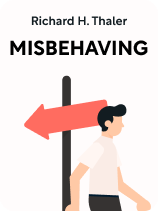

This article is an excerpt from the Shortform book guide to "Misbehaving" by Richard H. Thaler. Shortform has the world's best summaries and analyses of books you should be reading.
Like this article? Sign up for a free trial here.
Why do people perform mental accounting when it comes to their finances? What are some examples of mental accounting?
One of Richard H. Thaler’s arguments against constrained optimization is that people perform mental accounting. Behavioral economics describes this as a cognitive bias that causes people to place different values on money. We’ll focus on three key examples of mental accounting.
Let’s take a look at three common examples of mental accounting.
Example #1: The Endowment Effect
Thaler first explains that many consumers fall victim to the endowment effect as a part of mental accounting in behavioral economics: They overvalue their current possessions, even though they accurately value items they don’t own. For example, imagine that a consumer purchased a Cuban cigar several years ago for $25 that’s now worth $100. In this situation, many consumers would choose to smoke this cigar rather than sell it, even though they wouldn’t consider buying the same Cuban cigar for $100 if they didn’t already own it.
But Thaler points out that this set of preferences is logically inconsistent: If you choose to smoke the cigar rather than sell it, that shows that you do value the cigar at least $100, since you could easily sell it for $100 instead of smoking it. If consumers obeyed the premise of constrained optimization, their economic preferences should be consistent. After all, they would recognize that they could sell the cigar for $100 to increase their budget and thus would only smoke the cigar if it was truly worth $100 to them.
Thaler notes, however, that many mainstream economists believed that although the endowment effect might occur in individual cases, it could never occur in a market setting. These economists reasoned that in an efficient financial market where assets were accurately priced, consumers wouldn’t exhibit irrational behavior like the endowment effect.
To that end, Thaler, along with Nobel laureate Daniel Kahneman, designed an experiment testing the endowment effect in a miniature market. In a class at Cornell, Thaler and Kahneman provided half of the students with a Cornell mug, then allowed the students without the mug to make offers to purchase one from their classmates. If the market were rational, the sellers’ reservation price (the minimum offer they would accept) should align with buyers’ purchase price (the amount offered to purchase the mug)—after all, rational sellers wouldn’t value items higher because they happened to own them.
However, Thaler and Kahneman found the opposite: Sellers consistently had higher median reservation prices (about $5.25) than buyers’ median purchase price (between $2.25 and $2.75). This experiment—which has been repeated with consistent results—shows that sellers’ valuation of mugs is consistently higher than buyers’ valuations, a clear example of the endowment effect in a market setting.
Example #2: The Sunk Cost Fallacy
In a similar vein, Thaler points out that many consumers commit the sunk cost fallacy: They treat money that has already been lost as relevant to financial decisions. For example, imagine that you purchase a $20 ticket to a movie, find it unbelievably boring after the first 30 minutes but decide to finish the movie so you don’t “waste” the $20. In this case, you’re treating the sunk cost of $20 as relevant to your decision, when in actuality you’ll be out the $20 either way.
Thaler explains that committing the sunk cost fallacy violates the premise of constrained optimization because it involves treating money no longer in your budget as if it were part of your budget. In the previous example, the $20 spent on the ticket is no longer part of your budget and thus shouldn’t factor into your decision to continue watching the movie.
(Shortform note: The sunk cost fallacy can also affect decision-making in groups and organizations. In one famous instance, the French and British governments committed to a $100 million project to produce the Concorde, a supersonic jet. Even though it quickly became clear that the project would be too costly to become profitable, the French and British governments persisted because they had already spent so much on it. The Concorde operated for only 30 years, and it ended up costing these governments millions of additional dollars because they refused to abandon the project earlier.)
Example #3: Budgeting
Another common form of mental accounting, Thaler relates, involves budgeting: Consumers often create separate budgets for separate categories of spending. For example, a family might have one budget for monthly groceries, one for its mortgage, one for entertainment, and one for insurance payments.
Although budgeting doesn’t necessarily violate constrained optimization, Thaler points out that it often does in practice when we treat budgeting categories as independent of one another. For instance, if you had additional money in your entertainment budget at the end of the month, you might splurge on an expensive experience and justify it as being within your budget. In so doing, you would fail to evaluate whether purchasing that expensive experience maximizes your overall budget, since the money you spent might be better spent elsewhere.
(Shortform note: Experts point out our tendency to think of budget categories in isolation can create even bigger problems for people with credit card debt. They might be tempted to keep some money in a savings account that accrues a low rate of interest, even though the interest accrued by the credit card debt more than offsets the interest from the savings account. Consequently, the decision that maximizes your money would be to use all of your savings to pay off your credit card debt, rather than keeping some money in savings—but it’s hard to see that if you think of savings as an independent budget category)

———End of Preview———
Like what you just read? Read the rest of the world's best book summary and analysis of Richard H. Thaler's "Misbehaving" at Shortform.
Here's what you'll find in our full Misbehaving summary:
- Why the theory of traditional economics rests on a faulty foundation
- How consumers actually behave in economic situations
- Real-world cases of behavioral economics helping consumers






